Archives
- April 2024
- March 2024
- January 2024
- December 2023
- November 2023
- October 2023
- September 2023
- August 2023
- July 2023
- June 2023
- May 2023
- April 2023
- March 2023
- February 2023
- September 2022
- August 2022
- April 2022
- March 2022
- December 2021
- November 2021
- October 2021
- September 2021
- August 2021
- July 2021
- June 2021
- May 2021
- April 2021
- March 2021
- February 2021
- October 2020
- September 2020
- August 2020
- July 2020
- June 2020
- May 2020
- April 2020
- March 2020
- February 2020
- January 2020
- December 2019
- November 2019
- October 2019
- September 2019
- August 2019
- July 2019
- April 2019
- March 2019
- February 2019
- January 2019
- December 2018
- November 2018
- October 2018
- September 2018
- August 2018
- July 2018
- June 2018
- May 2018
- April 2018
- March 2018
- February 2018
- January 2018
- November 2017
- October 2017
- September 2017
- August 2017
- July 2017
- June 2017
- May 2017
- April 2017
- March 2017
- February 2017
- January 2017
- December 2016
- November 2016
- October 2016
- September 2016
- August 2016
- July 2016
- June 2016
- May 2016
- April 2016
- March 2016
- February 2016
- January 2016
- September 2015
- August 2015
- April 2015
- February 2015
- January 2015
- December 2014
- November 2014
- September 2014
- July 2014
- June 2014
- March 2014
- June 2013
- July 2012
Categories
oak
Aging Your Wine
Bulk Aging
As seen in and written for Winemaker Magazine
Written By Christina Musto-Quick
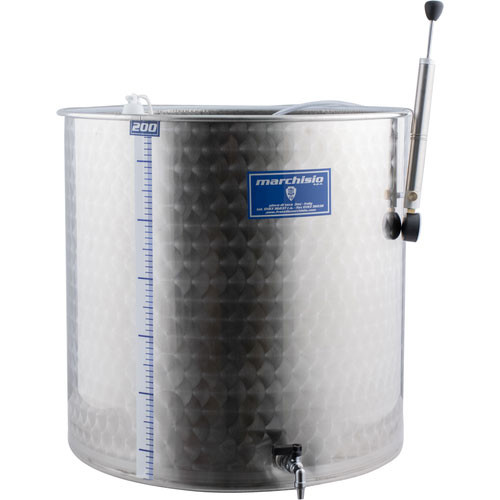
Aging your wine is not the most exciting winemaking topic, but it is a critical topic. Aging wine is considered from the time after your fermentation is completed through the time spent in the bottle before consumption. The three basic goals of aging your wines are to assure stability, to correct a flaw or fault, and to evolve the wine style by increasing complexity, flavor, and aroma. The goal of this article is to give you a deeper insight into the benefits of aging your wine, no matter your winemaking style or skill level.
Considerations of Aging Wine
Let’s start with looking at each of the factors that affects the aging process: Time, temperature, oxygen, oak, yeast lees, pH, the composition of the wine, and wine stability.
Time
Different aging styles require different allotments of time. Aging a Bordeaux with high acid and high tannins will take much longer to age than a softer California Cabernet. Grapes grown in cooler climates tend to need more time to age due to their higher acid and tannin structure, whereas grapes from a hotter region can usually be enjoyed earlier. Of course, as I write that, I am left thinking about how subjective that sentence is. Normally we are ready to bottle our whites 7–8 months after fermentation. I like my reds to go one year of bulk aging before bottling, and longer is better.
Temperature
Just as all chemical reactions are influenced by temperature, so are the reactions during wine aging. Wine aging is best from 58–70 °F (14–21 °C). You don’t want to over chill or over heat the wine during the aging process. You could lose a lot of positive aromas and flavors that way. If you don’t have a natural “ideal” temperature in your cellar, I would suggest installing an air conditioning unit in your wine cellar to handle those warm summer days. The colder winter temperatures will not hurt the wine as much as the summer heat. The biggest factor is to avoid temperature fluctuations from hot to cold. Wine likes to age at a steady temperature.
Oxygen
Excessive exposure to oxygen during aging can have a negative effect on your wine. The introduction of small amounts of oxygen during the aging process can help soften your wine and stabilize the color in red wine. This is the benefit of the barrel, as it allows micro oxidation through the staves. Too much oxygen can lead to off flavors (acetaldehyde) and the browning/pinking of the color. Too much oxygen will cause your free SO2 levels to drop, which can then cause oxidized qualities in your wine (acetaldehyde — nuttiness, Sherry characteristic). The more phenolic material in the wine, the more oxygen the wine can safely absorb. This is why white wines are so susceptible to oxygen contact such as browning, whereas red wines carry more phenolic properties and are less likely to brown or have negative effects so quickly.
It is said that a wine is “saturated” with oxygen at about 6 mL of oxygen per liter of wine, or 8 mg/L, or 8 ppm. Single saturation examples include racking, movement to tank or barrel, fining, filtration, and bottling. How do you measure this? With a dissolved oxygen meter or, some wine grape and juice wholesalers have the testing equipment to do it for you on site. How do you control these saturations and not over saturate your wine? Limit headspace, stay vigilant about topping off your barrels, utilize inert gas to flush out air, measure and adjust your SO2 levels every 6 weeks, and monitor your saturation levels.
Oak
Many wine styles depend on oak aging. Oak aging highly impacts the aroma and flavor profile of the wine. This is because of the flavor the oak imparts by itself and the complexity added to the wine through micro oxidation. Barrels can be challenging — you need to properly clean them, swell them, and consistently keep track of them by topping off your wine. If you have the funds and the time to monitor and cultivate your barrel I would highly suggest purchasing one. If you do not, there are some great alternatives we will discuss later in this article.
Why is aging in an oak barrel so great? Wood vessels allow limited oxygen exposure, allow for slight evaporation (hence needing to top off your barrels), and add flavor components and complexities. Something to consider is the size of the oak barrel you purchase. If you purchase a new barrel smaller than 30 gallons (114 L) then you need to taste from your barrel every couple of weeks. This is because the less surface area you have, the more flavor extraction you will get from the barrel. Obviously, the younger the barrel the more flavor extraction will occur. As time goes on (after 3 or 4 years), the barrel will become neutral, meaning the oak extraction is greatly reduced. However, the barrel itself is still useful, as it allows the wine to mature and adds complexity to the wine. Also, cleaning your oak barrels is VERY important. Barrels can harbor microbes and it can be difficult to sanitize them if not properly cleaned.
Yeast Lees
Aging on the lees is a great practice for white wines. The most popular wine to age on the lees is Chardonnay, but winemakers are aging Sauvignon Blanc (France), Albariño (Spain), Muscadet (France), and Champagne (France) on the lees too.
I spoke with Kristen Parsons of Chamard Vineyards in Clinton, Connecticut about her Estate Reserve Chardonnay crafted in the French Meursault style and why she ages it on the lees. After aging in barrels for primary fermentation, a secondary malolactic fermentation is carried out along with sur lie aging.
“The wine remains on the fine, silky lees that are composed of mostly autolyzed yeast cells. I stir the barrels mixing up these lees into the wine, daily, weekly, and then monthly for ten months. All of this is carried out for stylistic reasons. This attention creates a wine with a smoother structure and mouthfeel, increased body, and aromatic complexity. The resulting wine is layered with a rich and creamy mouthfeel,” Parsons said. “Another bonus it that the lees absorb oxygen, which not only enhances the character of the wine but aids in protection as well.”
pH
pH is a very important factor in all stages of winemaking. If you adjust anything in your grapes before fermentation, it is the pH. When it comes to aging your wine, a high pH is dangerous as the wine is vulnerable to spoilage organisms. It is important to make sure the SO2 is in balance with the pH. The SO2 effectiveness is critical to color and freshness, especially in white wines. The SO2 and pH balance also INHIBITS the growth and activity of microorganisms. A pH of 3.8 is considered a critical range for Brettanomyces (barnyard), Lactobacillus (mousy/acetic acid), and Pediococcus (overly diacetyl). You do not want to be in that range. So make sure to keep track of your pH and SO2 levels. For red wines you want to be around a 3.5 pH and for white wines you want to be around 3.1–3.3 pH.
Composition of the Wine
Starting with a good wine is key to your wine aging and finishing success. Starting with a faulted wine will result in an uphill battle. Always pay attention to your fermentations and cleanliness in your home winery. If you have a wine with negative characteristics, get it tested to see what exactly is going on. Some suppliers offer sensory tests, there are also companies that can give you the chemical breakdown of your wine that you can utilize. Sometimes a little micro oxidation is exactly what the doctor ordered. Other times you might need to introduce a chemical over time to help clean up what’s going on.
Wine Stability
The wine needs to be stable — meaning proper SO2 binding, pH levels, cold stability (tartrate stability), heat stability (protein haze), combination of tannin molecules (“polymerization”), and the combination of color molecules (“polymerization”), and stabilization of color. Adjusting and aging your wine properly helps ensure that your wine stays safe in the bottle.
Benefits of Bulk Aging
There are many benefits to aging your wine as bulk. One, is the ability to correct a problem. Do not bottle your wine until you have removed faults and flaws. If you have bitter or astringent tannins in a young red wine, you can bench test fining trials.
The second is the stylistic choices you get to play with and experiment with. All wines will evolve and release more complex flavors and aromas over time. Depending on if you decide to do any oak infusions or age in an oak barrel, these practices will help impart interesting and complex flavors to your wine. Conversely, if you decide to age in a stainless tank or glass, your wine will contain a bright freshness.
The third benefit is that it allows for blending possibilities with other wines. This is one of the most fun parts about winemaking in my opinion. If you age your wine you have time to do bench trials and figure out ways to try to impart more complexity in your wine by blending other wines in your cellar. The goal of aging is to increase complexity in your wine and you have a lot of options to play with to introduce complexities.
Equipment Options
Glass
There are a few options you can try when aging your wine in glass. However, if you are aging your wine in glass you want to keep in mind that you want to keep your wine away from the light. Too much light in your cellar can impact the color saturation of your wine. Whatever option you choose, always top off your storage vessel to avoid oxidation.
Demijohns are a great glass option. They have been used by winemakers for many years. They come in multiple sizes, can be used for winemaking, cider, and depending on the style, olive curing. It is easy to do an oak infusion with a demijohn. There are a few ways to do this. You can use fishing line and a muslin hop bag filled with oak chips, use an oak infusion tube filled with oak chips, or use fishing line and a stave, spiral, or WineStix® to impart oak flavors.
Demijohns can be difficult to move around so I’d suggest getting a plant caddy and putting the demijohn on the caddy so it’s easier to move. Please note that the bottom of the demijohn is very thin glass so it can break easily, especially when filled with wine. Be careful when moving these, they are deceptively secure looking with the outside basket.
Demijohn Sizes: Demijohns are a large glass bottle that is narrow at the top and curves out into a big tear shape at the bottom. Each demijohn is equipped with a plastic basket or braided plastic basket. Some demijohns come with spigots for tasting access to the wine. They come in a variety of sizes, the most popular for winemaking are 10LTR, 25LTR, and 54LTR.
Carboys are one of my favorite options: They are inexpensive, come in an array of sizes, are easy to use, easy to clean, easy to add oak infusions, and you can see what’s going on with your wine . It’s important to see if you are accumulating a lot of sludge at the bottom of your carboy. This means it’s most likely time to rack your wine. Carboys can also be a little tough to move around when full. I’d suggest getting a plant caddy or putting your carboy inside a milk carton crate to help you move it around your cellar. Winemaker Frank Renaldi of Musto Wine Grape Company says, “Carboys are a great storage vessel when you start making wine 5- or 10-gallons (19- or 38-L) at a time. I suggest you go to a variable capacity tank when you are up to three to five carboys of the same wine. It is easier to maintain one tank versus five carboys, such as racking, filtering, additives, and SO2 additions.”
Carboy sizes: Carboy look like a water cooler water jug. They are a thicker glass than demijohns but do not come with spigots. Carboys come in a variety of sizes 3 gallon, 5 gallon, and 6 gallon.
Food-Grade Containers
PET carboys are a popular vessel, especially for those who are working with kits. These are lightweight, making them easier to lift and move around your cellar, and they will not break like glass. However, cleaning these can pose a problem. When cleaning your PET carboy you can create grooves in the plastic that can eventually be a home for bacteria, no matter how much you scrub. Keep that in mind when cleaning these and try not to scrub too hard or scratch the inside of the PET carboy.
ROTO Barrels are food-grade plastic barrels. They are great because they give that barrel vibe to your cellar without breaking the bank. You can add oak infusions, it’s easy to rack in and out of, and gives a great look to your cellar. However, just like the PET carboy, you have to be conscious of how you clean it to help avoid creating any homes for bacteria.
Flex Tanks are created from a polyethylene food-grade safe plastic. They give the winemaker the ability to utilize is as an aging vessel that is permeable like a barrel but is in a shape that is easier to store in their cellar. There are two different maturation styles that allow the winemaker to decide how much oxidation they want released into their wine . These are maturation weight, which allows a level of oxygen transfer on par with a second year barrel, and a heavyweight level which allows less oxygen transfer, approximately 50% less than the maturation weight.
Oak Barrels & Infusions
Oak barrel aging is a hot topic for winemakers. There are many different thoughts on which oak to use and how long to age in an oak barrel. Rick Lanza of Wooden Valley Winery, in Fairfield, California says that he barrel ages his Cabernet Sauvignon first and then bottle ages it for up to a year. “We prefer barrel aging for red wines because it allows the tannins to refine and become finer grained, and you get the micro oxidation through the barrel, so that helps soften the wine.”
When using oak barrels you definitely want to taste often to avoid over-oaking, make sure the barrels are topped-off monthly, properly manage your S02 levels, and be patient — it will be time well spent. Harry Hansen, Winemaker at Calistoga, California’s Sterling Vineyards says, “Barrel aging allows for more rapid development and softening of tannins, while bottle aging allows development of secondary aromas. Wines like Cabernet Sauvignon, Petite Sirah, or Tannat can accept longer aging in barrel than Pinot Noir because they have more pigment and tannin to begin with, so generally Pinot goes to bottle younger.
Flavor considerations for oak barrels consist of the type of oak (French, American, or other), the age of the barrel, the toast level, if there was a different type of alcohol aged in there previously, and the number of times it’s been used. All of these factors impart different flavors.
Barrel alternatives include staves, chips, oak powder, spheres, oak spirals, WineStix®, and more. Each has its pluses and minuses, but just like an oak barrel you want to taste your wine regularly to make sure you are imparting the flavors you want in your wine. WineMaker digital members can read more about these options at: https://winemakermag.com/article/beyond-the-barrel.
Variable Capacity Stainless Steel Tanks
Variable capacity tanks are another winemaker favorite. Hansen says he prefers using stainless steel or glass vessels for white wines because they are “impenetrable to oxygen, and the wines age most slowly. This is appropriate for delicate whites like Riesling or Sauvignon Blanc.”
Stainless steel tanks are also great for bulk aging red wines. They protect your wine, have variable levels of volume, have a sample tap you can utilize, are easy to clean, easy to infuse with oak or other products, and pretty much last forever. If you can invest in a stainless steel tank you won’t regret it!
Quick Tips: I’ve outlined a lot of equipment above but just as important as it is to find the right aging vessel for you, it’s also important to maintain your airlocks and bungs. If you don’t keep your airlocks full or bungs clean you are asking for bad things to happen with your wine. These may be small items but they can introduce big problems if not maintained. Also, always have different sized glass jugs in your cellar. This helps you manage your topping off needs without losing any wine to over-oxidation. Lastly, keep track of your SO2 Levels. Oxygen isn’t your friend and you don’t want your wine to spoil while it ages. Remember wine always wants to turn to vinegar, and it is a living product. You need to protect it!
Bulk vs. Bottle Aging
It has been said by many winemakers that complexity increases in the bottle. However, there is a point where the wine in bottle will start to lose its luster. This has to do with the type of wine, its SO2 levels, pH level, storage temperatures and its exposure to light. Winemaker Frank Renaldi says, “I am a big believer of aging wines in bulk — either tanks or barrels. I find the wine develops much better as a “team of bottles” in one vessel. Once the wine hits the bottle, it ages as a single entity. It ages in a different way, especially reds, but does it on its own.”
Winemaker Harry Hansen says, “Aging in bottle is subjective. Wines that are bigger and blacker generally can handle more cork time than light reds, which in turn can handle more cork time than delicate whites. At some point, tannins are softened, fruit characters have receded, and youth is a memory. Wines can still be very good, because what is lost in freshness is often replaced by layers of aroma. The eventual fate of every wine is to become vinegar, but as slowly as possible, please.”
So there you have it! A lot of things to think about regarding the aging of your wine, but all worth taking into consideration. I hope this information has helped shed some light on aging your wines, why it’s important, and how you can play and experiment with it.
SIDEBAR – Products to help avoid the need to age so long
Looking to impart age without aging your wines? No problem. I understand that sometimes you just want to enjoy your wine as soon as possible. If your wine has any harsh tannins or needs some “rounding out” I’d suggest looking into the following products.
Noblesse is a natural nutrient that is used to help soften wines. It can be used pre- or post-fermentation. It is great if you need to soften a high-alcohol wine or round out a wine that is too high in acid or tannin. Noblesse will help soften your wine’s mouthfeel. Sometimes our grapes are high in Brix and we can’t help but have a high-alcohol wine. Noblesse will help soften your wine’s mouthfeel giving the perception of a rounder, silky mouthfeel, while reducing any sulfur smells and burning sensation from the high alcohol.
Gum Arabic is a tartrate stabilizer that helps soften the perception of astringent and bitter tannins. It also helps stabilize your wine’s color. This is a great tool for when your wine tastes that little bit “too young.” It can help a wine taste another year older by just one simple addition.
Super Smoother is great tool that’s ideal for home winemakers because it comes in small packages intended for 6-gallon (23-L) batches. It contains glycerin and liquid oak extract. The combination of these two adds a subtle oak flavor while softening harsh tannins and smoothing out wine mouthfeel.
Tannin FT Rouge is derived from highly reactive tannins from exotic woods and chestnut. I usually suggest using this pre-fermentation to help preserve the natural tannins from the grape, help stabilize color, and enhance mouthfeel. You can use this post-fermentation but you will have to wait 3–6 weeks for the addition to show up in your wine. A simple nutrient to add to your primary fermentation schedule that can help you during the winemaking process.
For more information regarding the Fall Harvest please feel free to contact us at sales@juicegrape.com or give us a call at 877-812-1137. We are looking forward to helping you with your next great wine!
Wine Grape Spotlight – Malbec
Malbec is a grape variety with a deep, inky color, producing dry red wines that boast robust tannins and a long, smooth finish.
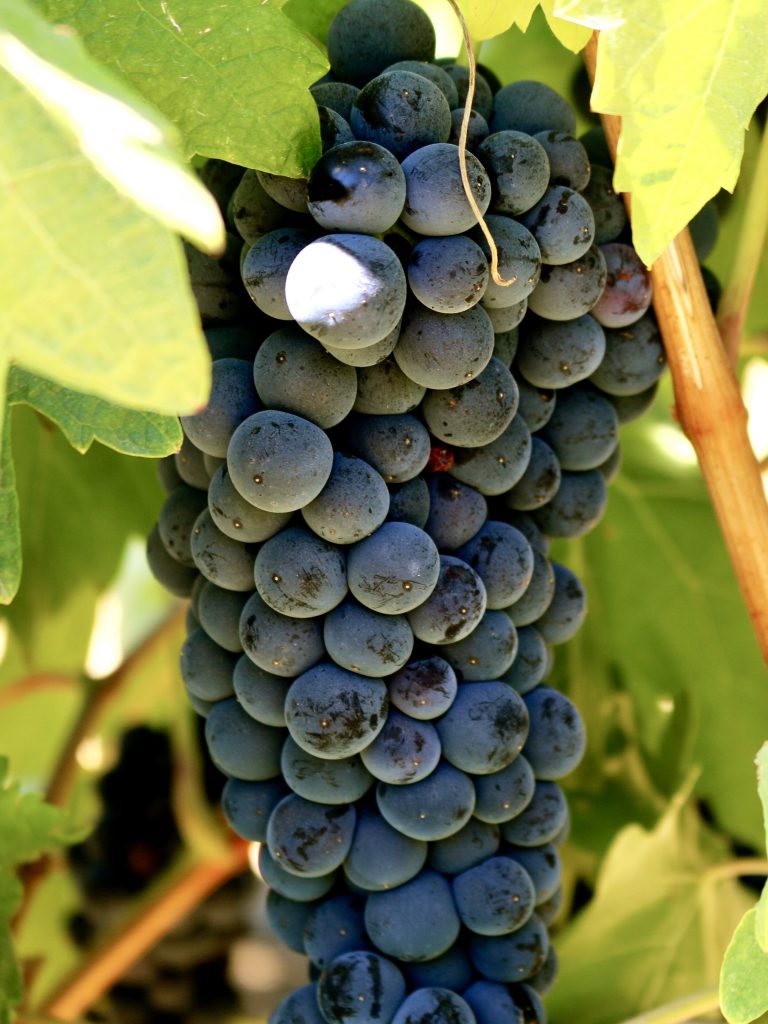
Where is Malbec from?
Malbec was almost exclusively grown in France, where it played a primary role as one of the main Bordeaux grapes. The climate and pests in France did not allow for Malbec to perform to its utmost potential. Struggling to thrive, growers saw it as weak, finicky, and susceptible to disease as well as rot. It is mainly associated with Argentina and Chile now because it thrives there. It took well to the climate, excelling in the high elevation and heat, making it one of the most widely planted grapes. In the United States, you can find the majority of wine grape plantings in California, yet Malbec only makes up for 0.5% of those plantings.
Malbec Characteristics
This grape can yield a wide range of fruit aromas that vary widely depending on the climate they are grown in. Cooler climates like France and Washington state yield black cherry, raspberry, and plum aromas. For warmer climates like Chile, you’ll get more blackberry, blueberry, plum, and black cherry. They’re juicy and jammy, with notes of vanilla, tobacco, dark chocolate, and oak. They have medium acid and moderate levels of tannins. Chilean Malbec’s boast with red fruit flavors like cherry, raspberry and have floral and slight earthy notes.
Can I make my own?
Musto Wine Grape Company is here to help you make the wine of your dreams! The Spring Chilean winemaking season starts in late April, early May. Secure your Malbec and give us a call at (877) 812-1137 to speak with one of our Musto Crush Crew members. We can get you set up with everything you need and provide customer support along the way to ensure your success!
What does the Toast Level of a Wine Barrel really mean?
There are many arguments among barrel coopers and winemakers as to what species of oak is best for ageing wine. While it is true that French/American/Hungarian oaks all impart unique characteristics in wine, perhaps the most important differences between barrels is not the origin of the wood, but rather its level of toast.
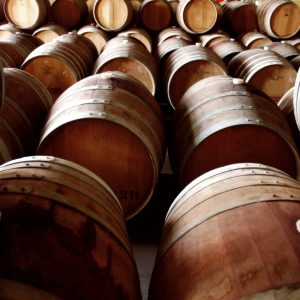
What does the Toast Level of a Barrel really mean?
The toast level refers to how long the barrel is toasted in order to impart certain flavors in your wine. The toast helps caramelize the sugars in the wood. There are 19 different toast levels, however, most winemakers work with Light, Medium, and Heavy toasted barrels.
How are Barrels Toasted?
The coopers use pieces of wood from the stave cutting process and place those into the oak wood fire. It is then set on fire when the barrel is positioned over it, and the toasting process begins. Coopers monitor the temperature closely to prevent any burns or blisters from forming inside of the barrel. The temperature is also key to getting the toast level correct. Then the master coopers will check for any imperfections and update the barrel accordingly.
What does Light Toast mean?
Lightly toasted oak barrels or oak chips usually impart sweet and creamy characteristics. Light toast usually works best with white wines such as Chardonnay, Sauvignon Blanc, Semillon, and Chenin Blanc.
Sweet Characteristics:
- Brown Sugar
- Bourbon
- Cotton Candy
- Chocolate
- Maple Syrup
- Butterscotch
- Hot Fudge
- Caramel
- Molasses
- Honey
- Toffee
- Soy
Creamy Characteristics:
- Vanilla
- Cream Soda
- Marshmallow
- Lactic
- Butter
American Oak Light Toast Chips
What does Medium Toast mean?
Medium toasted barrels and other oak products impart more yeasty, nutty, and lightly roasted flavors. Medium toasted oak usually works best for red wines such as Red Blends, Cabernet Sauvignon, Cabernet Franc, Zinfandel, Carignane, Syrah, Pinot Noir, and Petite Sirah.
Yeasty:
- Popcorn
- Baked Bread
- Bread Stick
- Cookie Dough
Nutty:
- Hazelnut
- Walnut
- Almond
- Peanut Butter
- Coconut
Roasted:
- Cedar
- Graham Cracker
- Toasted Bread
- Coffee
- Mocha
- Cereal
American Oak Medium Toast Chips
What does Heavy Toast mean?
Heavier toasted barrels and oak infusions usually impart more bold smoky and spicy characteristics. Heavily toasted oak is used for most fortified wines like Port, Sherry, Brandy, and Cognac. However, some winemakers are playing around with heavier toasts by leaving the wine in the barrel for short periods of time. This way they impart the flavors they desire without over oaking their wine.
Smoky:
- Barbecue
- Grilled Meat
- Bacon
- Sweet Smoke
- Burnt Sugar
Spicy:
- Nutmeg
- Cinnamon
- Clove
- Licorice
- Anise
American Oak Heavy Toast Chips
So not only can the oak impart flavors, but your toast levels do matter! Think of them as a part of your “Winemaker’s Spice Cabinet”. Just another touch that can bring in and impart more complex flavors.
The Winemaker’s Think Tank: Vol 24 – 5 Cost Effective Tips to Help you Save Money in Your Winemaking
What’s the Winemaker’s Think Tank?
Every Thursday we will post about a few frequently asked questions that our winemaker has answered. If you have a winemaking question you would like to have answered, please email us at support@juicegrape.com and we will try to get into next week’s post. Cheers! 🙂
Cost Effective Tips to Help you Save Money in Your Winemaking
1. Alternative Varietals – Most winemakers aspire to make a big, bold Cabernet Sauvignon or supple Merlot. While these grapes make excellent world class wine, they are not the only varietals that can give you these results. Call your grape supplier and ask for a list of varietals that they can source for you. Do some research on lesser known varietals such as Carignane, Cinsault, Grenache, or Gamay. Perhaps making one of these varietals in the style of your preferred varietal, will yield some satisfactory, and more cost effective results.
2. Reusing Barrels Safely and Effectively – Barrels contribute two factors to wine: oak flavor and a round mouthfeel. While the first few vintages aged in the barrel will be bursting with oak flavor, over time, the oak flavor will dissipate from the barrel, rendering it neutral. While the barrel may not be able to contribute a lot of flavor to the wine, it will still add an important reductive character through micro-oxidation. Wine will still continue to evaporate out of the barrel and yield a creamier, smoother mouthfeel. If the winemaker desires more oak flavor, oak may be added to the barrel in the form of chips, staves, spirals, or cubes. This method will allow the winemaker to keep using the barrel for many vintages, rather than replacing them when the oak flavor diminishes.
3. Oak Alternatives – Barrels have much of the visual “romance” associated with winemaking, however they can be a very costly investment. For a new home winemaker making smaller batches, it may not even be feasible to get a small enough barrel. Rather than putting the wine into a barrel, why not put the “barrel” into the wine? Oak is now available toasted in the same way a barrel would be and in a variety of forms and sizes. In each form, it will deliver oak flavor to the wine, some shapes having more surface area and acting more quickly, whereas other shapes may take longer to infuse flavor. These are a very cost effective and efficient way of imparting oak flavor to wine.
4. Involve Friends – As your home winemaking progresses, often times winemakers want more sophisticated processing and analytic equipment. While a Destemmer/Crusher or a Bladder Press may last you many years, it is a costly initial investment. One way to help defray the cost of the equipment is to purchase it with other winemakers. If you have friends who also make wine or can network through a wine appreciation society, you can find other vintners who may be willing to split the cost of the machines with you. This can turn crushing and pressing into a party! Not only will the cost be divided, but so will the labor. Another way to try and reduce the cost of equipment is to try and purchase used equipment. Keep an eye on Craig’s List and wine classifieds for pieces of equipment someone wants to part with. Also, a local winery may have some equipment that they no longer use as they have scaled up and they jump at an opportunity to sell it rather than allowing it to collect dust.
5. Increase Production – As with many item in life, buying in bulk is more cost effective. Speak with your local grape broker to see if they offer volume discounts. If you have formed a winemaking group to share equipment costs, then perhaps you can get a better price on grapes if you purchase together, rather than separately. The same idea applies to corks and bottles. Buying larger quantities, provided you have adequate storage space, will save you money.
We hope this information helps with your winemaking. If you have any follow up questions or winemaking questions in general, please email us at support@juicegrape.com.
The Winemaker’s Think Tank: Vol 21 – Do I need a barrel to make wine? Can I just use tanks/glass?
What’s the Winemaker’s Think Tank?
Every Thursday we will post about a few frequently asked questions that our winemaker has answered. If you have a winemaking question you would like to have answered, please email us at support@juicegrape.com and we will try to get into next week’s post. Cheers! 🙂
Do I need a barrel to make wine? Can I just use tanks/glass?
Most aspiring winemakers hold romantic visions of putting their wine in a barrel, tasting it periodically with loved ones, waiting until the magical moment it tastes perfect, and is ready to bottle. While there are benefits of barrel aging wines, it is not required to create a dry wine with oak flavors. Juice may be fermented in barrels, tanks, carboys, or pails. While the oak will add certain flavor characteristics and “sacrificial tannins” to the wine during fermentation, the winemaker can add oak dust, chips, or staves to create a similar effect. Furthermore, during the aging process, oak chips, spirals, staves, balls, cubes, etc. can be added to the wine to give it a pleasant oaked flavor. This is ideal for the home winemaker as it is more cost effective and often requires less time than traditional barrel aging. When wine is aged in a barrel, some of the wine evaporates out of the barrel, often referred to as the “angel’s share”. This results in a more concentrated, creamy mouthfeel as well as an oaked flavor. The wine within the barrel must be maintained as the evaporation will cause an air gap in the barrel (headspace), which can promote oxidation. Spare wine must be kept in a separate container to be used to top off the barrel to minimize this headspace. In summary, barrel can add a beautiful finesse and flavor to your homemade wine, but are not crucial to home winemaking success.
We hope this information helps with your winemaking. If you have any follow up questions or winemaking questions in general, please email us at support@juicegrape.com.
Oak Additions Video Up on Youtube!
Hello Winemakers!
We are excited to release our newest video. In the video Winemaker Frank Renaldi goes over all the different Oak opportunities available to winemakers.
Archives
- April 2024
- March 2024
- January 2024
- December 2023
- November 2023
- October 2023
- September 2023
- August 2023
- July 2023
- June 2023
- May 2023
- April 2023
- March 2023
- February 2023
- September 2022
- August 2022
- April 2022
- March 2022
- December 2021
- November 2021
- October 2021
- September 2021
- August 2021
- July 2021
- June 2021
- May 2021
- April 2021
- March 2021
- February 2021
- October 2020
- September 2020
- August 2020
- July 2020
- June 2020
- May 2020
- April 2020
- March 2020
- February 2020
- January 2020
- December 2019
- November 2019
- October 2019
- September 2019
- August 2019
- July 2019
- April 2019
- March 2019
- February 2019
- January 2019
- December 2018
- November 2018
- October 2018
- September 2018
- August 2018
- July 2018
- June 2018
- May 2018
- April 2018
- March 2018
- February 2018
- January 2018
- November 2017
- October 2017
- September 2017
- August 2017
- July 2017
- June 2017
- May 2017
- April 2017
- March 2017
- February 2017
- January 2017
- December 2016
- November 2016
- October 2016
- September 2016
- August 2016
- July 2016
- June 2016
- May 2016
- April 2016
- March 2016
- February 2016
- January 2016
- September 2015
- August 2015
- April 2015
- February 2015
- January 2015
- December 2014
- November 2014
- September 2014
- July 2014
- June 2014
- March 2014
- June 2013
- July 2012






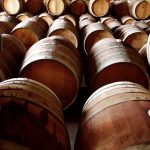
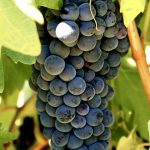
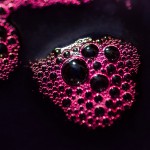
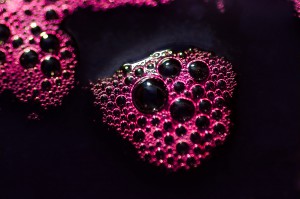
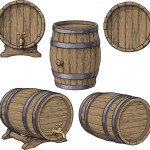
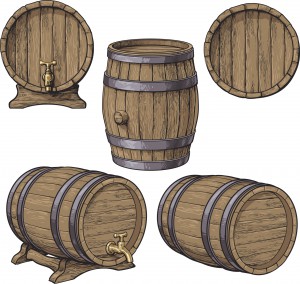
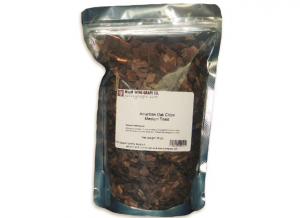

Recent Comments